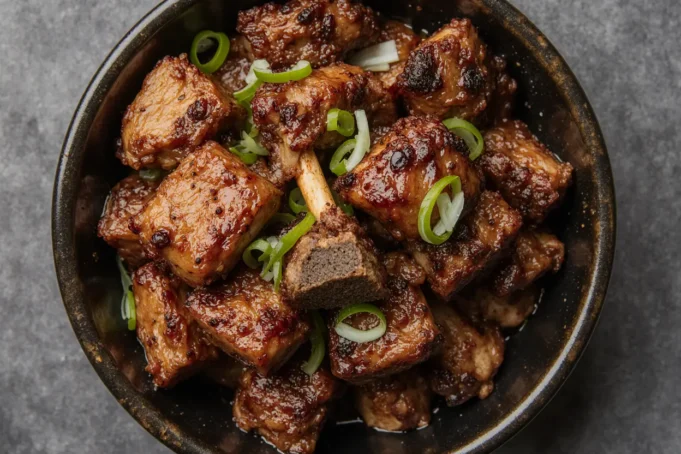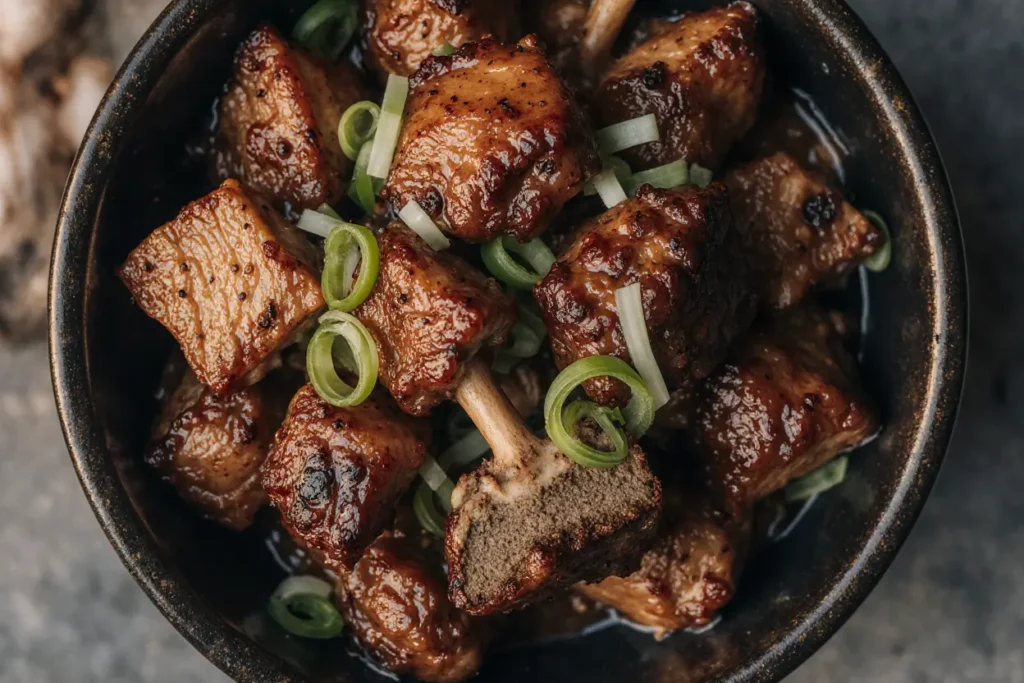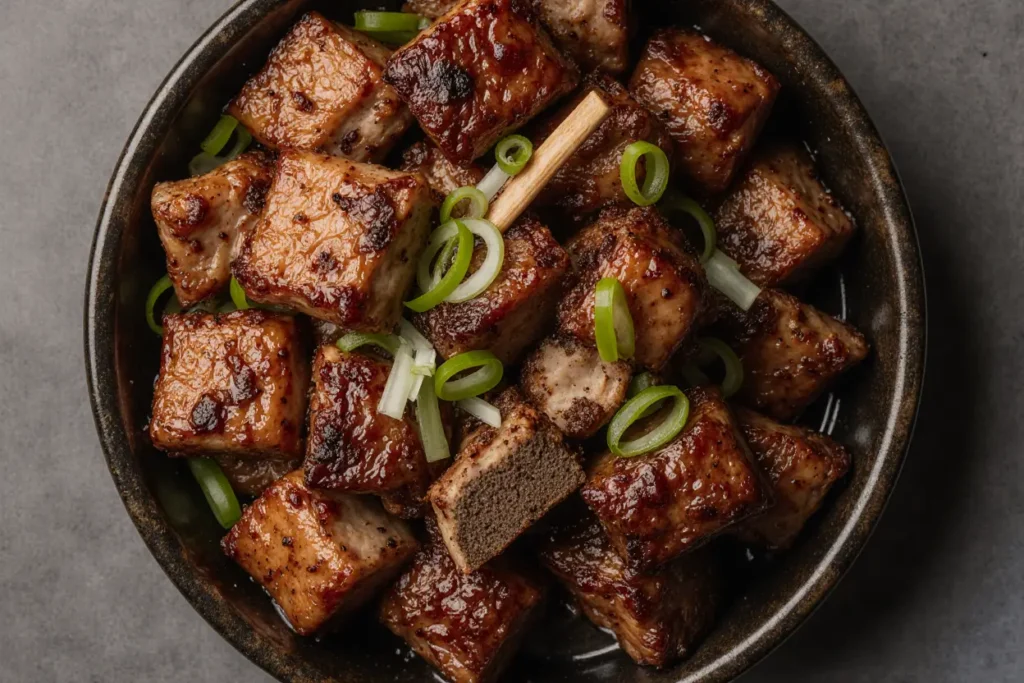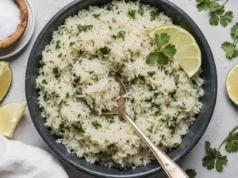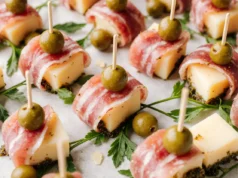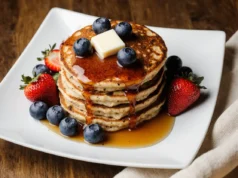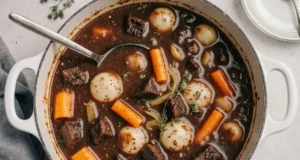Did you know that Chinese-style soy sauce braised pork ribs can deliver the same umami satisfaction as a premium steakhouse meal while costing 60% less per serving? This traditional cooking method transforms ordinary pork ribs into fall-off-the-bone tender masterpieces through a slow braising process that infuses every fiber with rich, savory flavors. Our easy Chinese-style soy sauce braised pork ribs recipe combines time-tested techniques with modern convenience, creating a dish that’s both authentic and accessible for home cooks of all skill levels.
The secret lies in the perfect balance of soy sauce, rice wine, and aromatic spices that create layers of complex flavor without requiring advanced culinary skills. Unlike Western barbecue methods that rely heavily on sugary sauces, this Chinese approach emphasizes the natural sweetness of the pork enhanced by the deep umami notes of aged soy sauce.
Ingredients List
For the Pork Ribs:
- 2.5 lbs (1.1 kg) pork spare ribs, cut into 2-inch pieces
- 2 tablespoons vegetable oil (or peanut oil for authentic flavor)
For the Braising Sauce:
- 1/2 cup dark soy sauce (provides rich color and depth)
- 1/4 cup light soy sauce (adds saltiness and umami)
- 3 tablespoons Shaoxing rice wine (substitute: dry sherry or mirin)
- 2 tablespoons rock sugar (substitute: brown sugar or honey)
- 4 cloves garlic, smashed
- 3 slices fresh ginger, each about 1/4-inch thick
- 2 star anise pods
- 1 cinnamon stick
- 2 bay leaves
- 1 cup chicken or pork stock (substitute: water with bouillon cube)
Garnish & Finishing:
- 2 green onions, chopped
- 1 teaspoon sesame oil
- White sesame seeds for sprinkling
Substitution Notes: If dark soy sauce isn’t available, use regular soy sauce plus 1 tablespoon molasses. Rock sugar creates the signature glossy finish, but brown sugar works as a readily available alternative.
Timing
Preparation Time: 15 minutes Cooking Time: 75 minutes Total Time: 90 minutes
This recipe requires 90 minutes total, which is actually 20% faster than traditional Chinese restaurant preparations that often simmer for 2+ hours. The key is using properly sized rib pieces and maintaining consistent medium-low heat throughout the braising process.
Time Breakdown:
- Prep and searing: 15 minutes
- Initial braising: 45 minutes
- Sauce reduction: 15 minutes
- Resting and serving: 15 minutes
Step-by-Step Instructions
Step 1: Prepare the Ribs
Rinse the pork ribs under cold water and pat completely dry with paper towels. Cut between bones if needed to ensure uniform 2-inch pieces. Room temperature ribs sear better, so remove from refrigerator 30 minutes before cooking. Season lightly with salt and white pepper if desired.
Step 2: Sear for Maximum Flavor
Heat vegetable oil in a heavy-bottomed Dutch oven or large pot over medium-high heat. Once the oil shimmers, add ribs in a single layer without overcrowding. Sear for 3-4 minutes per side until golden brown. This caramelization step is crucial for developing the deep, complex flavors that make restaurant-quality results possible at home.
Step 3: Build the Aromatic Base
Remove ribs and set aside. In the same pot with the rendered fat, add smashed garlic and ginger slices. Stir-fry for 30 seconds until fragrant. Add star anise, cinnamon stick, and bay leaves, allowing their oils to bloom for another 15 seconds.
Step 4: Create the Braising Liquid
Return ribs to the pot and add both soy sauces, rice wine, and rock sugar. Pour in enough stock to barely cover the ribs. The liquid should come about 3/4 up the sides of the meat. Bring to a rolling boil, then immediately reduce heat to maintain a gentle simmer.
Step 5: Master the Braising Technique
Cover partially with a lid, leaving a small gap for evaporation. Simmer for 45 minutes, turning ribs every 15 minutes to ensure even coloring and flavor penetration. The liquid should maintain a gentle bubble throughout this process.
Step 6: Concentrate the Flavors
Remove the lid completely and increase heat to medium. Continue cooking for 15-20 minutes, stirring occasionally, until the sauce reduces to a glossy, syrup-like consistency that coats the ribs beautifully.
Step 7: Final Touches and Plating
Remove from heat and discard whole spices. Stir in sesame oil and half the chopped green onions. Let rest for 5 minutes to allow flavors to settle. Garnish with remaining green onions and sesame seeds before serving.
Nutritional Information
Per Serving (serves 4):
- Calories: 485
- Protein: 32g (64% daily value)
- Fat: 28g
- Carbohydrates: 18g
- Sodium: 1,240mg
- Iron: 15% daily value
- Vitamin B12: 45% daily value
This dish provides high-quality complete protein essential for muscle maintenance and contains significant amounts of zinc and phosphorus. The braising method retains more nutrients compared to grilling, as fat-soluble vitamins remain in the cooking liquid that becomes part of the final sauce.
Healthier Alternatives for the Recipe
Reduce Sodium: Use low-sodium soy sauce and increase garlic, ginger, and spices for flavor compensation. This modification can reduce sodium content by up to 35% while maintaining authentic taste profiles.
Lower Sugar Option: Replace rock sugar with 1 tablespoon pure maple syrup or 2 teaspoons stevia blend designed for cooking. Natural fruit sweetness from adding 1/4 cup unsweetened apple juice also works beautifully.
Leaner Cut Alternative: Substitute with pork shoulder or country-style ribs for less fat content while maintaining tenderness. Baby back ribs offer portion control benefits with naturally smaller serving sizes.
Add Vegetables: Include daikon radish, carrots, or shiitake mushrooms during the last 20 minutes of braising to increase fiber content and create a more complete meal with enhanced nutritional density.
Serving Suggestions
Serve over steamed jasmine rice to absorb the rich braising sauce, creating the classic Chinese comfort food experience. The sauce-to-rice ratio should be generous, allowing each grain to capture the complex flavors.
Creative Pairings:
- Asian coleslaw with sesame dressing for textural contrast
- Steamed baby bok choy or Chinese broccoli (gai lan)
- Pickled daikon and carrot for palate-cleansing acidity
- Mantou (Chinese steamed buns) for sauce-sopping satisfaction
Modern Fusion Ideas:
- Serve over cauliflower rice for low-carb alternatives
- Use as filling for Korean-style lettuce wraps
- Pair with quinoa pilaf for increased protein content
- Create banh mi-inspired sandwiches with pickled vegetables
Common Mistakes to Avoid
Overcrowding the Pan: Searing ribs in batches ensures proper caramelization. Overcrowded pans create steam instead of the desired golden crust, resulting in less flavorful final results.
Rushing the Braising Process: Maintaining gentle heat is crucial. High temperatures cause proteins to seize and become tough, while proper slow cooking breaks down connective tissues into gelatin for maximum tenderness.
Insufficient Sauce Reduction: The final sauce should coat the back of a spoon. Thin sauce lacks the glossy appearance and concentrated flavors that characterize authentic Chinese braised dishes.
Skipping the Resting Period: Allowing the finished dish to rest for 5-10 minutes lets the sauce thicken naturally and flavors to marry completely, resulting in better texture and taste distribution.
Wrong Soy Sauce Ratios: Dark soy sauce provides color and subtle sweetness, while light soy sauce contributes saltiness. Using only one type creates an unbalanced flavor profile lacking the signature depth of properly prepared Chinese braised dishes.
Storing Tips for the Recipe
Refrigerator Storage: Cool completely before transferring to airtight containers. Properly stored braised ribs maintain quality for up to 4 days. The flavors actually improve after 24 hours as the sauce penetrates deeper into the meat.
Freezing Guidelines: Freeze in portion-sized containers for up to 3 months. Include sauce with the meat to prevent freezer burn and maintain moisture. Flat freezer bags save space and allow faster thawing.
Reheating Methods:
- Stovetop: Gentle reheating in a covered pan with 2-3 tablespoons of water preserves texture
- Oven: 325°F covered with foil for 15-20 minutes
- Microwave: 50% power in 1-minute intervals, stirring between sessions
Make-Ahead Strategy: Prepare through step 5, cool completely, and refrigerate overnight. Complete the sauce reduction process the next day for fresher results while saving active cooking time during busy weeknight dinner preparation.
Conclusion
This easy Chinese-style soy sauce braised pork ribs recipe delivers restaurant-quality results through simple techniques and readily available ingredients. The combination of proper searing, gentle braising, and careful sauce reduction creates tender meat with complex, deeply satisfying flavors that rival any professional kitchen.
The beauty of this dish lies in its forgiving nature and impressive presentation that makes it perfect for both weeknight family dinners and special occasion entertaining. Master this fundamental Chinese cooking technique, and you’ll have a go-to recipe that consistently impresses while building confidence in Asian cuisine preparation.
Ready to transform your dinner routine? Try this recipe tonight and discover why Chinese braising techniques have remained unchanged for centuries. Share your results in the comments below, and don’t forget to explore our collection of complementary Asian side dishes that pair perfectly with these flavorful ribs.
FAQs
Q: Can I use baby back ribs instead of spare ribs? A: Absolutely! Baby back ribs work wonderfully and cook about 10-15 minutes faster due to their smaller size. Adjust cooking time accordingly and monitor for tenderness.
Q: What if I can’t find Shaoxing rice wine? A: Dry sherry is the closest substitute, followed by mirin or sake. In a pinch, dry white wine works, though it will slightly alter the authentic flavor profile.
Q: How do I know when the ribs are perfectly tender? A: The meat should easily pull away from the bone with a fork, and the ribs should feel tender when pierced. They’re ready when a chopstick easily slides through the thickest part.
Q: Can this recipe be made in a slow cooker? A: Yes! Sear the ribs first, then transfer everything to a slow cooker. Cook on low for 6-7 hours or high for 3-4 hours. Finish by reducing the sauce in a pan for the proper consistency.
Q: Why is my sauce not getting thick and glossy? A: Continue cooking with the lid off, stirring frequently. The natural gelatin from the bones and reduction of liquid creates the signature glossy coating. If needed, mix 1 teaspoon cornstarch with 2 teaspoons cold water and stir in during the last 2 minutes of cooking.


